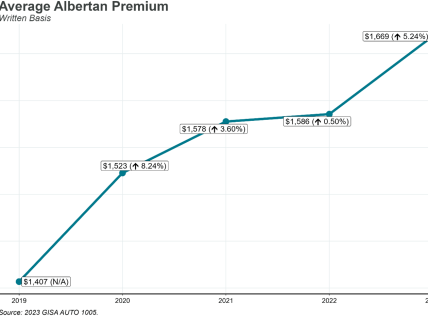Despite the growing concern for climate change and an increase in use of electric vehicles, Alberta officials and industry stakeholders raised concerns about the federal government’s zero-emission vehicle sales mandate, which was set to begin in 2026. Most stakeholders are now pleased to hear the federal government has put a pause on their Electric Vehicle mandate.
What is the Mandate?
The mandate strived to make a full national electric vehicle transition by 2035, hoping for at least 20 per cent of new passenger vehicles sold in Canada to be zero-emission by 2026, 60 per cent by 2030, and 100 per cent by 2035.
Improving the supply and choice of electric vehicles available to drivers could significantly lower the price of electric vehicles and lead to less transportation emissions. This type of policy has been shown to be more effective long-term at cutting emissions and decreasing costs than giving rebates for electric vehicle buyers.
How many Electric Vehicles are currently in the market?
Last year, Albertans purchased over 223,000 new vehicles, but less than 25,000 electric vehicles were produced in Canada that same year. Â Electric and plug-in hybrid vehicles, both included in the mandate, take up only 3.64% of the market share in Alberta currently. While this number is steadily increasing, electric vehicles are still the most expensive vehicles on the market, and it may take drivers longer to make the transition to zero-emission vehicles.
Additionally, Canada maintains a 100 per cent tariff on electric vehicles imported from China, which produces approximately 70 per cent of the world’s electric vehicles. These tariffs may limit electric vehicle supply to Canada and increase overall electric vehicle costs for consumers.
How does this affect premiums?
When the mandate was originally introduced, insurers offered discounts on electric vehicle insurance to encourage drivers to purchase them. However, more research into electric vehicles has shown they have higher claims’ frequency risk and repair costs than gasoline or diesel vehicles. Because of this, some insurers have made electric and hybrid vehicles more expensive to insure.
In 2024, before the mandate pause, electric and hybrid vehicle premiums averaged around $2000 in Alberta and Ontario, but now they average around $2300. In contrast, gasoline and diesel vehicles premiums averaged around $1700 in 2024 and $1800 today. While this discrepancy is partly due to insurers removing electric vehicle discounts during the mandate pause, it is also due to the higher cost of repairing electric vehicles’ batteries and more automated technology.
What does this mean for the environment?
The federal government is still planning to put the mandate into effect, but they are reviewing and amending the policy targets to be more realistic of the current market. The same environmental goals are being targeted but using more feasible techniques. In addition to regulatory adjustments, the government is also exploring options to bring more affordable electric vehicles to Canada.
Overall, the Canadian government is still striving to reduce total carbon emissions and increase electric vehicle use throughout Canada, and while pausing the mandate might change short-term goals, the long-term goals remain intact. The pause allows the industry to create a more effective plan for a smooth transition to electric vehicles.





